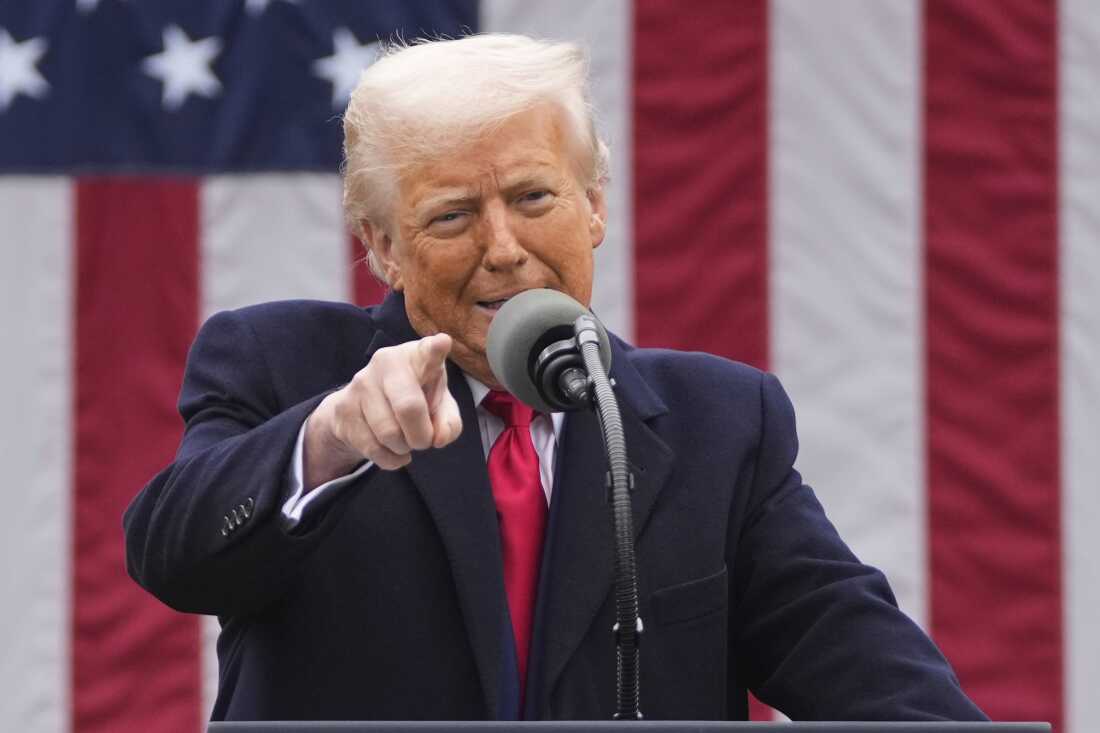Former President Donald Trump has proposed a new economic measure aimed at easing the financial burden on American households. The plan, which involves issuing $2,000 rebate checks tied to tariffs, has sparked debate among economists, policymakers, and the public, raising questions about its potential impact on inflation, trade, and the broader economy.
Trump’s proposal emerges in the context of ongoing discussions about how to manage the economic fallout from international trade policies. Tariffs, which are taxes imposed on imported goods, have long been a tool used by the United States to protect domestic industries, influence foreign policy, and generate revenue. However, they can also lead to higher prices for consumers and complications in global trade relationships. By offering rebate checks equivalent to certain tariff revenues, the idea seeks to offset the increased costs faced by American households, essentially returning money collected from import taxes directly to citizens.
Understanding the mechanics of the rebate
The notion of a $2,000 reimbursement is intended to serve as a direct financial offset for consumers facing elevated costs due to duties on imported goods. Fundamentally, should tariffs lead to an increase in product prices, the government would issue payments to qualified citizens to mitigate a portion of that economic burden. Supporters contend that this strategy could offer prompt assistance to households grappling with escalating expenses, especially for necessities such as groceries, apparel, and gadgets.
However, detractors warn that the proposal might lead to unforeseen outcomes. Although it could briefly boost discretionary spending, certain financial experts caution that it might worsen inflationary trends. By infusing capital into the market without a commensurate rise in available goods, prices could escalate even more, possibly eroding the intended advantage of the refund. Furthermore, questions arise regarding the funding mechanism for such an initiative, its practical execution, and the potential for political division stemming from its introduction.
Economic and Political Ramifications
The proposition also holds considerable political significance. By connecting the refunds to duties—a characteristic feature of Trump’s past commercial regulations—the initiative resonates with a demographic that favors assertive protectionist approaches. It portrays the former head of state as a defender of the “average American,” directly tackling worries about living expenses and financial disparity. Concurrently, it reignites discussions regarding the actual efficacy of tariffs. Detractors contend that tariffs frequently harm domestic enterprises dependent on imported goods, potentially jeopardizing the enduring vitality of the economy.
From a broad economic standpoint, these rebates have the potential to shape how consumers act. With an injection of $2,000 per payment, households might boost their expenditures, thereby bolstering economic expansion in the near term. Businesses in retail and services could experience heightened demand, and specific industries might enjoy a temporary surge. However, economists are split on whether this initiative would result in lasting enhancements to the economic climate or simply offer a brief stimulus with restricted enduring impact.
Potential effects on trade relations
Another intricate aspect involves the repercussions for global commercial interactions. Tariffs represent a divisive instrument, frequently inciting reciprocal actions from commercial allies. Although rebate payments could mitigate the internal perception of tariffs, they do not eradicate the fundamental obstacles to trade. Nations impacted by U.S. tariffs might persist in levying their own duties or pursue alternative strategies to safeguard their sectors, potentially escalating commercial friction.
Moreover, enterprises operating within international supply networks might encounter difficulties if tariffs and their associated reimbursements are not meticulously applied. Businesses dependent on imported resources could experience unpredictable cost variations, potentially disrupting manufacturing timelines and impacting job stability. Policymakers would be tasked with weighing the national advantages of rebates against the wider repercussions for both global trade and local industries.
Public reception and viability
Public reaction to the rebate proposal has been mixed. Some Americans welcome the idea as a direct means to alleviate financial stress, particularly in a climate of rising living costs. Others view it skeptically, questioning the practicality of administering such payments and the long-term implications for the economy. Social media and news outlets have amplified both support and criticism, reflecting broader divisions in public opinion about trade policy, government spending, and economic intervention.
Implementation viability presents another crucial consideration. Distributing $2,000 payments to millions across the nation would necessitate a strong administrative framework, encompassing precise identification of qualified individuals, seamless integration with financial institutions, and safeguards against fraudulent activities. Previous initiatives involving stimulus payments and rebate schemes underscore the difficulties in effectively managing extensive payment distributions. Any holdups or inaccuracies could erode public trust and diminish the program’s overall impact.
While the concept remains largely theoretical, it has revitalized conversations regarding the optimal methods to assist families grappling with financial strain. These rebate payments highlight a wider discussion concerning the interplay between commercial regulations and national well-being: how to safeguard American businesses without imposing excessive costs on consumers. Lawmakers, financial experts, and the general populace are expected to persist in examining the plan’s viability, its potential economic consequences, and its political implications in the coming months.
Ultimately, the $2,000 tariff rebate proposal underscores the ongoing tension in economic policymaking: balancing short-term relief for citizens with long-term stability for the national and global economy. As debates unfold, it remains to be seen whether the initiative will gain traction, undergo modifications, or fade into the broader landscape of proposals aimed at addressing the cost of living.
Irrespective of the final result, Trump’s proposed rebate has already ignited crucial discussions concerning the interplay between trade and economic strategies and daily existence, underscoring the difficulties in formulating policies that are both fair and financially robust.





